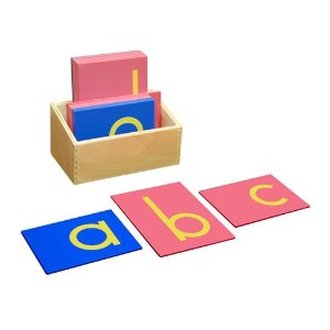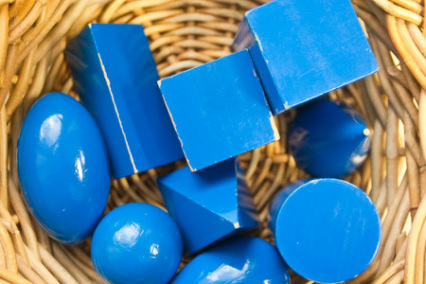Lessons
A child may not work with activity until the has demonstrated its proper use to him or her, then he or she may use it as he or she wishes (limited only by his or her imagination or a danger to the material, himself or herself or others) Each activity leads directly to a new level of learning or concept. When a child "plays," he or she is acquiring the basis for later concepts. Repetition of activities is considered an integral part of this learning process and children are allowed to repeat activities as often as they wish. A child becoming tired of the repetition is thought to be a sign they are ready for the next level of learning.
|
The child proceeds at his or her own pace from concrete objects and tactile experiences to abstract thinking, writing, reading, science, mathematics. For example, in the language area, the child begins with the sandpaper letters (26 flat wooden panels, each with a single letter of the alphabet cut from affixed to it). The child's first lesson is to trace the shape of the letter with their fingers while saying the phonic sound of the letter. A next level might be the letter boxes (small containers each with a letter on the top, filled with objects that begin with that letter). Having mastered these, the child may move on to the word boxes (small containers each with a short three-letter word on the top, for example CAT, containing a small wooden cat and the letters C, A, T). One child might move through all three levels of lessons in a few weeks while another might take several months; although there is a prescribed sequence of there is no prescribed timetable. A Montessori teacher or instructor observes each child like a scientist, providing him with appropriate lessons as he is ready for them.
|


